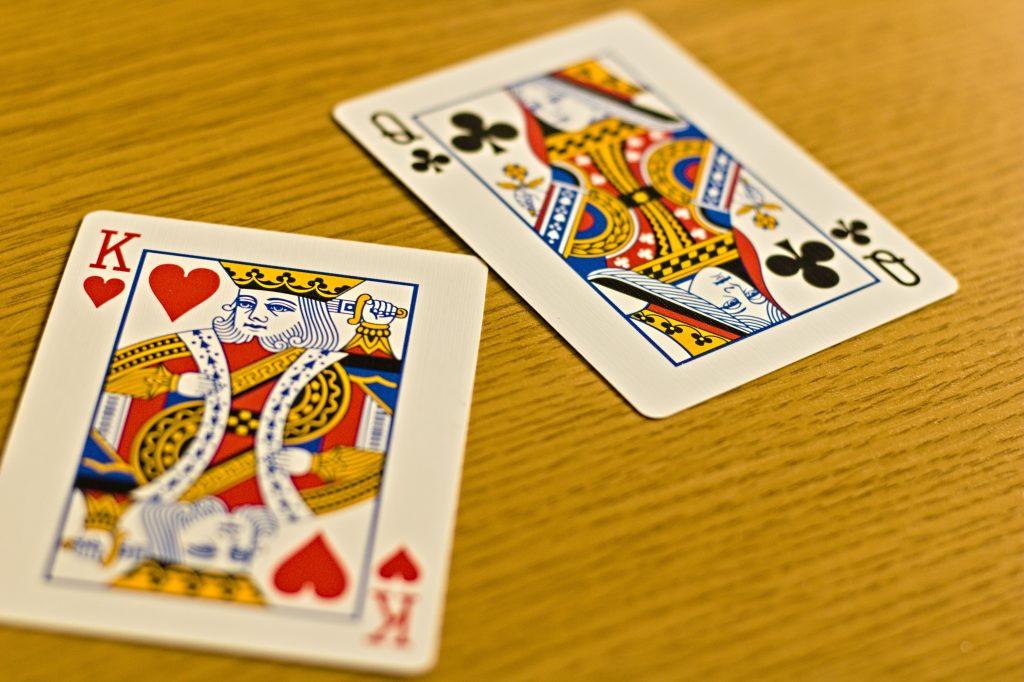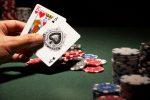Decoding Card Games: The Similarities and Differences Between Bridge and Blackjack
An Overview of Bridge and Blackjack
Blackjack, also known as 21, is a widely popular casino card game with roots in 18th-century France. The objective of the game is to beat the dealer by either obtaining a total that exceeds the dealer’s total or by not going over 21 when the dealer does. It begins with each player, including the dealer, being dealt two cards. Players then decide whether to “hit” (take another card) or “stand” (stick with the current cards), aiming to get as close to 21 as possible without going over. If a player’s hand exceeds 21, they “bust” and automatically lose. The dealer must hit until their cards total 17 or higher. In terms of strategy, knowing when to hit or stand is crucial.
Bridge, on the other hand, is a trick-taking card game with a rich history dating back to the Ottoman Empire. It gained popularity in the 19th and 20th centuries and has become a staple in many social gatherings. The game is played with a standard deck of 52 cards and involves four players divided into two partnerships. The gameplay consists of two main parts: bidding and playing. In the bidding phase, teams try to predict how many tricks they will win. The highest bidder gets to declare the trump suit. During the playing phase, the aim is to win tricks by playing high-ranking cards. Scoring depends on the number of tricks won and the bid made. Understanding your partner’s play and maintaining communication through bids can significantly improve your performance in Bridge.
Comparing the Objectives of Bridge and Blackjack
Bridge and Blackjack, while both card games have starkly different objectives and strategies for players. In Blackjack, the primary objective is to beat the dealer by accumulating a hand value closer to 21 without exceeding it. The player’s decision to hit, stand, double down, or split – based on their current hand and the dealer’s visible card – plays a crucial role in achieving this goal. For example, a player with a hand value of 16 might choose to ‘hit’ if the dealer’s visible card is 7 or higher, aiming for a total closer to 21.
On the other hand, Bridge is a team-based game where the objective is to win more tricks than the opposing team. It’s not just about the individual cards but about the sequence and strategy of playing them. The game involves complex bidding systems and communication between partners to predict and win the number of tricks bid. For instance, a team might bid a ‘3 No Trump,’ indicating they believe they can win nine tricks with no suit as Trump. This prediction will determine the scoring and the strategic play of the hands.
While both games require strategic decision-making, the complexity and level of communication in Bridge contrasts sharply with the more individualistic and probability-focused gameplay of Blackjack. However, they share a common element of risk assessment – whether it’s deciding to take another card in Blackjack or making a high bid in Bridge. Both games reward players who can accurately gauge their situation and make strategic decisions accordingly.
Exploring Card Distribution Strategies
In both Blackjack and Bridge, understanding card distribution is crucial to strategizing and enhancing one’s chances of winning.
In Blackjack, the objective is to get a hand totaling closer to 21 than the dealer without going over. The game typically uses multiple decks shuffled together, with each player dealt two cards initially. A proficient Blackjack strategy involves card counting, a method where players track the ratio of high to low cards left in the deck. For example, if many low cards have been dealt, the player knows the remaining deck is rich in high-value cards, increasing the likelihood of the dealer busting or the player getting a blackjack. This knowledge can inform decisions about betting amounts, hitting, standing, splitting, or doubling down.
Bridge, conversely, requires a more cooperative strategy as it’s a partnership game to win tricks. Understanding the distribution of cards among the unseen hands is key. For example, if during the bidding phase a partner bids indicating they have a long suit (many cards of a particular suit), the other partner can strategize to try and make that the trump suit, as this increases their chances of winning tricks. Counting ‘out’ cards (keeping track of what’s been played) also helps players infer what cards are left with other players, aiding in decision-making during the play phase.
While the strategies for each game differ significantly due to their distinct objectives and gameplay, the common thread is the importance of awareness and interpretation of card distribution to inform strategic decisions. The more accurately a player can predict the cards left in the deck or opponents’ hands, the better their chances of securing a win.
Analyzing the Role of Luck in Bridge and Blackjack
Luck plays a significant role in both Bridge and Blackjack, but its influence varies due to the unique dynamics and skill requirements of each game.
In Blackjack, the luck factor is prominently seen in the initial distribution of cards. The game begins with each player being dealt two cards, and the value of these cards can significantly impact the player’s strategy and potential for winning. For instance, receiving an initial hand of 11 presents a strong position, as the player has a good chance of hitting a 10 or face card to reach 21. However, despite the undeniable role of luck, players can use strategies like card counting to turn the odds in their favor. This method involves tracking the ratio of high to low cards remaining in the deck, allowing more experienced players to make informed decisions on hitting or standing based on the probable outcomes.
On the other hand, Bridge is a more strategic game where the luck of the draw is mitigated by skillful play. While the initial distribution of cards is entirely luck-based, success in Bridge heavily depends on players’ ability to communicate with their partners, make accurate bids, and strategically play their cards. For example, a player who dealt a poor hand can still contribute to their team’s success through smart bidding and play. In this sense, while luck determines the cards players receive, it’s their level of experience and understanding of the game that often determines the outcome.
In conclusion, while luck plays a role in both games, its impact varies. In Blackjack, luck combined with an understanding of probabilities can greatly affect the outcome, while in Bridge, skillful play and strategy can often overcome a poor hand.
Calculating Odds
Calculating odds in card games like Blackjack and Bridge involves understanding the probability of certain cards or combinations appearing based on what’s known about the deck and the current state of play. This process is different for each game due to their unique rules and objectives.
In Blackjack, where the goal is to get closer to 21 than the dealer without going over, calculating odds often involves card counting. This strategy is used to keep track of the proportion of high to low cards remaining in the deck or shoe (multiple decks shuffled together). For instance, if a deck is ‘rich’ in 10-value cards and Aces (i.e., there are many left), the player has a higher chance of being dealt a Blackjack (an Ace and a 10-value card), and dealers are more likely to go bust. Therefore, players may choose to increase their bets in this situation. However, this requires quick mental calculation and a solid understanding of the Blackjack strategy to be effective.
Bridge, on the other hand, is more complex when it comes to calculating odds due to its partnership and trick-taking nature. Here, probabilities are calculated based on both the cards in a player’s hand and their partner’s bidding. For example, if a player holds four cards of a suit, and their partner has bid that suit, they can infer that their partner likely holds most or all of the remaining cards in that suit. This knowledge helps in predicting how many tricks they might win. Bridge players often use the principle of restricted choice to calculate odds, which states that when a player has a free choice they will play cards in a way that keeps options open, thus providing information to an observant opponent. There is also a popular ‘odds of distribution’ understanding that if the opponents hold an uneven number of cards in a suit between them, they will split as evenly as possible (3-2, 2-1) and if the opponents hold an even number of cards in a suit they will split as oddly as possible (3-1, 4-2). A finesse will work 50% of the time, but there are other plays that might have slightly better odds. Understanding the odds at bridge is a priority for players looking to increase their odds of winning.
To improve one’s odds, it’s vital to understand the basic strategies of the game at hand, practice mental calculations, and stay alert to the state of play. Remember, while calculating odds can help make informed decisions, card games always involve an element of luck.
Tips to Improve Your Chances
Increasing one’s chances of success in Blackjack and Bridge requires a blend of strategic understanding, adherence to key rules, and meticulous avoidance of common pitfalls.
In Blackjack, a key strategy is mastering basic strategy charts, which guide players on when to hit, stand, double down, or split pairs based on their cards and the dealer’s up-card. Following this strategy can significantly decrease the house edge. Card counting is another advanced technique that, while not illegal, is frowned upon in casinos. It involves keeping track of high and low-value cards to adjust bets accordingly. A common mistake to avoid is chasing losses; it’s crucial to set a budget and stick to it to prevent spiraling losses.
For Bridge, communication with your partner during the bidding phase is paramount. Understanding and utilizing standard bidding conventions can greatly enhance your team’s performance. One common mistake in Bridge is failing to plan your play. Before playing the first trick, take a moment to assess your hand, consider potential challenges, and devise a strategy. Practicing ‘counting’ (keeping track of which cards have been played) can also drastically improve your decision-making skills.
Regardless of the game, a key way to minimize potential risk is by practicing good bankroll management. This involves only risking a small percentage of your total funds in any single session. Also, remember that different variants of both games might require slightly different strategies. For example, in ‘Spanish 21’ a variant of blackjack, all the 10s are removed from the deck, which alters the optimal basic strategy.
Ultimately, improving at Blackjack or Bridge involves continuous learning and practice. Consider joining a club or online community where you can learn from more experienced players and practice your skills in a low-risk environment. This article hopefully provided you with a comprehensive understanding of the card games Blackjack and Bridge.





